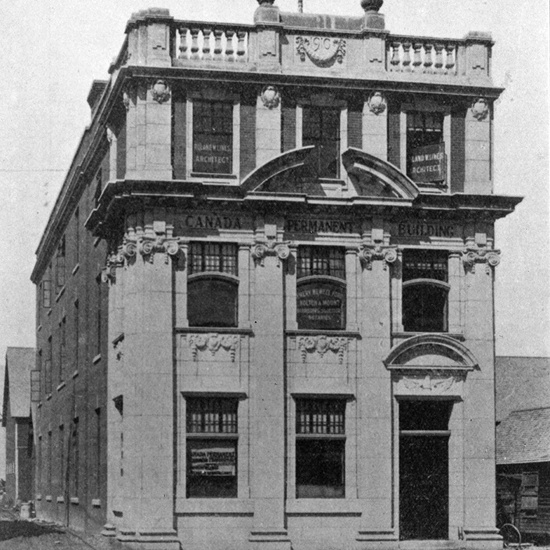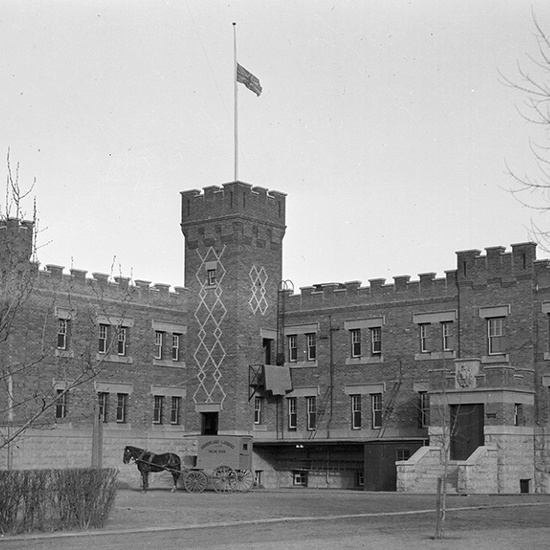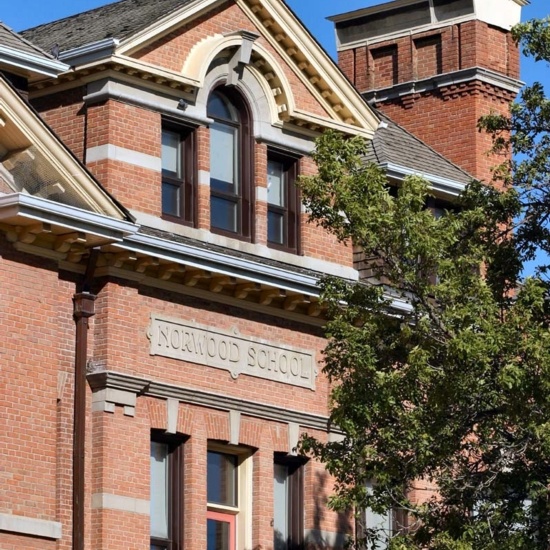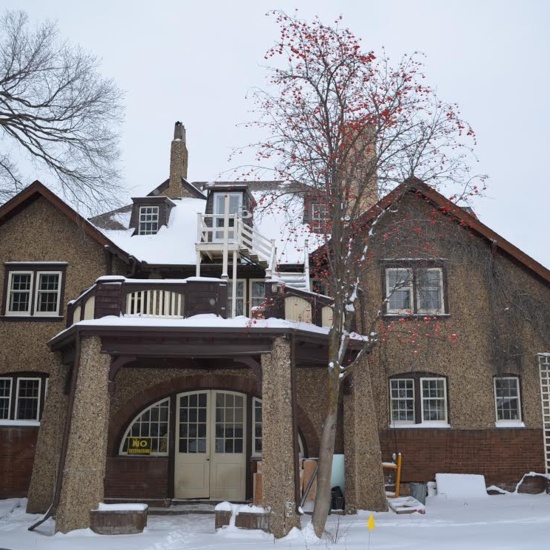Roland Lines
Roland Lines lived in Edmonton for a short ten years. His decade of work in the city, however, has left an impression that many never achieve in a lifetime of effort.
Roland Lines lived in Edmonton for a short ten years. His decade of work in the city, however, has left an impression that many never achieve in a lifetime of effort.
All we know of Roland Lines before he came to Edmonton is that he was born in England in 1877. He arrived in Edmonton in 1906 and practised here as an architect for ten years employing the young, up-and-coming architect William Blakey for a time. Lines was the president of the Alberta Association of Architects in 1913 and a Fellow of the Royal Institute of British Architects. When the First World War began he enlisted and became an officer with the 49th Edmonton Battalion, transferred to the Engineers, and - as did far too many - died on the battlefield in France in 1916. His work is left to fill in what is unknown of the man.
Lines was respected as a very versatile architect, designing buildings in a variety of styles often with strong classical influences. Many fine examples of Lines’ work remain, including the baroque inspired Canada Permanent Building (1910). Lines designed the Union Bank Building (1910), now the Union Bank Inn, which is uniquely styled, melding new techniques with influences from the Italian Renaissance. Three notable schools show Lines’ skill and adaptability. Alex Taylor School (1906) was the first local project Lines attempted, working with local architect Henry Denny Johnson; Norwood School (1908-1909) incorporated Classical Revival style elements; and the Strathcona Collegiate Institute (1909) – later known as Old Scona High School – demonstrates what advocates deem his fine sense of rhythm, proportion, and ability to combine different influences with harmonious results.
Details
Full Name
Roland Lines
Structures
Canada Permanent Building
Lambton Block
Northwest Mounted Police Barracks
Norwood School
Sylvancroft
Time Periods
Neighbourhoods
Architectural Styles
Arts and Crafts
Classical Revival
Collegiate Gothic
Edwardian
Gothic Revival
Character Defining Elements
Balconette, Balcony, Balustrade, Beams and braces, Bell-cast shingle eaves, Brick cladding, Brick structure, Carving, Chimney, Corner entrance, Cornice, Crenellated parapet, Date stone, Decorated parapet, Decorative brick, Eaves, Entablature, Exposed rafters, Flag pole, Flat roof, Gable dormer, Hipped dormers, Hipped roof, Intersecting gable roof, Irregular footprint, Keystone, L shape footprint, Lintel, Pediment, Pilaster, Pillars, Plinth, Porte cochere, Portico, Pyramidal roof, Rectangular footprint, Reinforced concrete structure, Returned eaves, Rock-faced stone, Rusticated stone, Skylight, Smooth stone, Solarium, Stone cladding, String course, Stucco cladding, Three storeys or more, Tower, Two storeys, Two-storey bays




